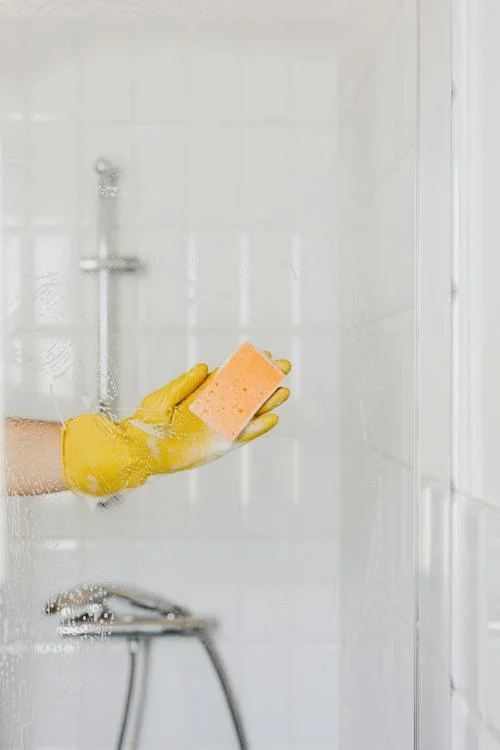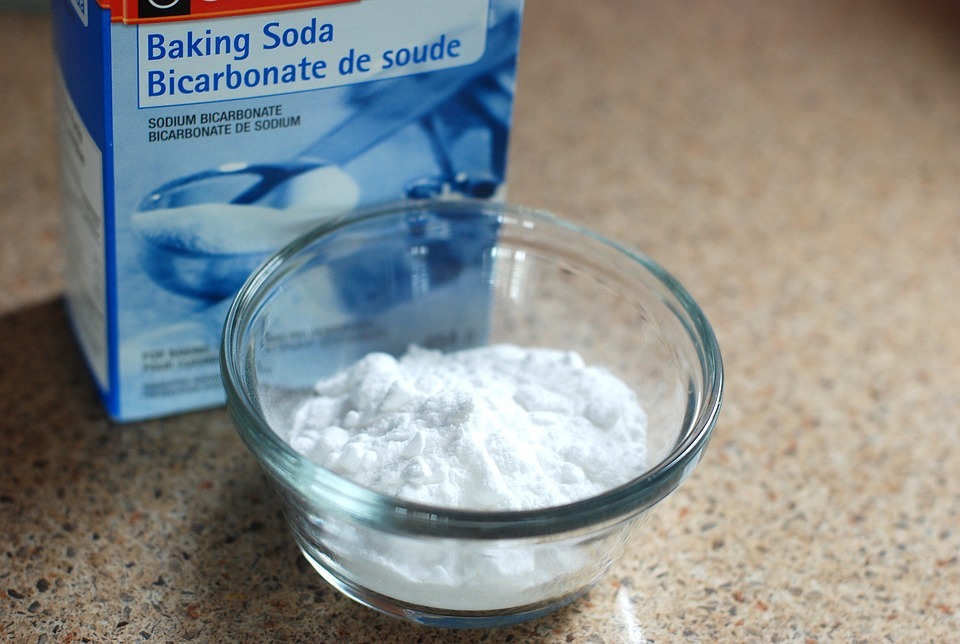A common household problem with tile flooring and walls is staining. Tiles can be stained because substances penetrate its porous finish, making it difficult to clean. There are many reasons why it happens, such as food and drink spillages, soap residue, or increase in room temperature that causes humidity and moisture to thrive. Grout on tiles may also face mold and mildew, as well as grime accumulation. Keeping them in pristine condition all the time is a hard task, but there are a number of ways to remove stains and clean grout. Here are some of them:
1. Use vinegar solution
Vinegar is a kitchen staple that can also act as a deodorizer and household cleaner, among its other capabilities. For ceramic and glass tiles, it removes simple stains and dirt immediately, prevents the growth of mold and mildew, and eliminates water spots, soap scum, and mineral deposits. It is recommended to mix vinegar with other products. So in a spray bottle, you can combine two cups water, two cups plain white vinegar and one teaspoon of liquid dish detergent and mix thoroughly. Simply rinse the area to loosen up the dirt, spray the area with the solution and let it sit for 15 minutes or more. After that, use a soft-bristle brush to remove the stains and dirt, then rinse thoroughly.
A mixture of equal parts white vinegar and water can also act as preventative spray you can use after using the surface, such as before getting out of the shower. However, vinegar should not be used on real marble, granite or other natural stones as it can etch the surface and cause damage that can’t be undone.
2. Apply baking soda
Like vinegar, baking soda has the power to remove impurities and deodorize surfaces. It’s a mild abrasive that is effective for light cleaning of dirt, stains, residue, and water spots. If you have stubborn stains, scrubbing it with baking soda can remove it. Simply dip a damp sponge into a bowl of baking soda, then use it to scrub tiles and grout. Rinse thoroughly with warm water.
3. Use bleach
If your tile is white or has a light color, bleach is a great stain remover for tiles and helps brighten up grout. It kills bacteria, mold, yeast Just make sure that whenever you are using bleach, the area must be well ventilated. Mix bleach a cup of bleach with 3 cups of water, and add one tablespoon of a liquid cleaning agent like dishwashing liquid or shampoo. Spray that solution on the surface of the tile and let it stay for at least 15 minutes to remove deep stains. Then brush the areas to help remove the stain that didn’t come clean by just soaking. Make sure to rinse the area well to completely remove bleach residue to avoid accidents and a further buildup of soap.
4. Mix baking soda and hydrogen peroxide
If all else failed to whiten grout and remove stubborn molds and stains, baking soda needs extra reinforcement: hydrogen peroxide. Baking soda is an alkaline cleaner and when mixed with sanitizing agent hydrogen peroxide, it makes a fungicide and whitening agent. Make a paste out of ¾ cup baking soda, ¼ cup hydrogen peroxide (3%), and a tablespoon of liquid soap or shampoo. Using a soft bristle brush, lightly apply the mixture on the tile and grout area you want to clean. Make sure it reaches even the cracks and crevasses in the grout, and let it soak for at least 15 minutes. Rinse the area completely using warm water and use a washcloth or rag to pick up any residue left. Rinse the tiles again thoroughly.
5. Apply borax
Borax is a natural mineral that results from seasonal evaporation of salt lakes. It has a high pH of 9.3, making it an effective alkaline cleaner that can disinfect and deodorize. Borax can bRemovee used in the same way as baking soda – simply dip a damp sponge in it and scrub tiles and grout to remove stains and dirt.
6. Sprinkle some salt
You may not see this coming – but yes, salt can be used to clean, too! Salt kills microorganisms like mold by dehydration. But for this to work, you must keep the area around the mold wet while you apply some salt. Rub the tile area with a damp cloth and sprinkle the salt, before you scrub the grouted parts. Allow it to soak overnight before you can clean it off in the morning. Use coarse salts like Epsom salts for more effective cleansing action.
7. Use natural cleaning products for natural stone tiles
Natural stone tiles such as marble, granite, limestone, travertine, slate and other calcite-based materials must be treated mildly, so bleach and vinegar are not advised. They must be cleaned with pH-neutral cleaners because otherwise their appearance can be damaged. Buy products made of natural ingredients to be safe. One recommendable cleaner by a marble professional is an oil-based soap meant for cleaning wood. You only need to mix 2 gallons of warm water with ¼ cup of oil-based soap to make it suitable for cleaning stone tiles. Spray the mixture and use a rag and some elbow grease to remove stains, grime, and accumulated soap scums.
Here are some precautions you have to take note before using any product to clean your tiles.
- Test your cleaning product first. When you’re trying a new product, try it first in a small, inconspicuous area. Some cleaning solutions might damage or discolor your tile or your colored grout, so you have to test it first.
- Check product labels. The labels of cleaning products usually mention what materials it can be used for safety. See if it’s suitable for your type of grout and tile.
- Try wiping the stain away first. Some stains can be removed just by wiping away with a clean rag or a rag soaked in soapy water. If the stain is still there after you wiped it with a rag, then you can pull out cleaners and brushes.
- Don’t use wire brushes. Tiles and grout can be scratched if you use stiff-bristle brushes like a wire brush, and these scratches can further accumulate dirt, stains, and grime, which you are trying to remove in the first place. Use soft-bristle brushes only to scrub your tile and grout.


